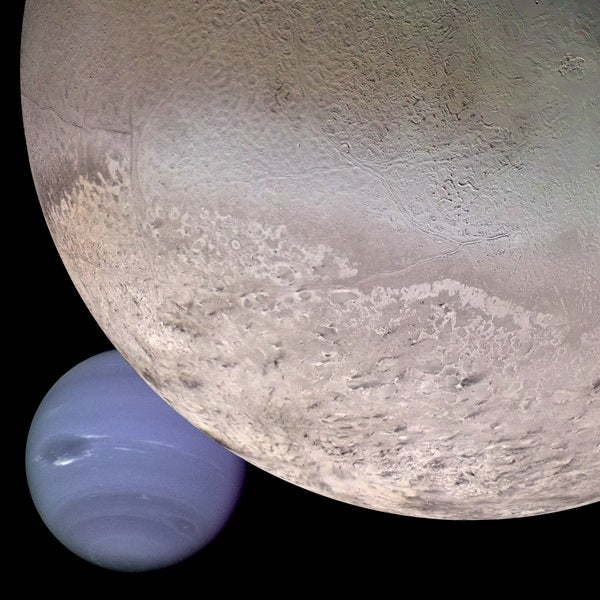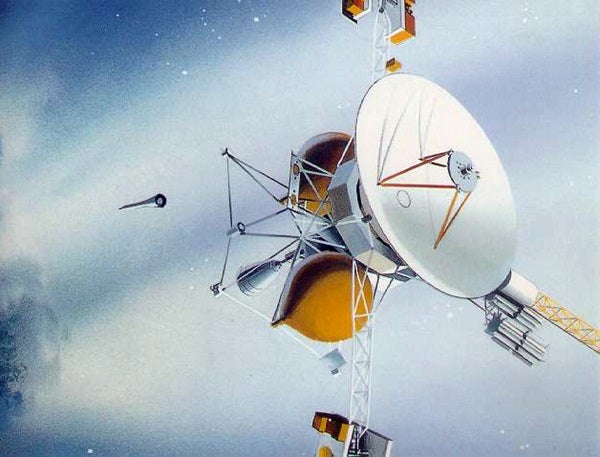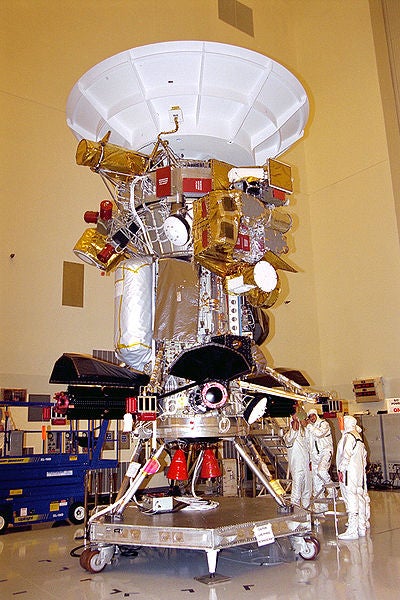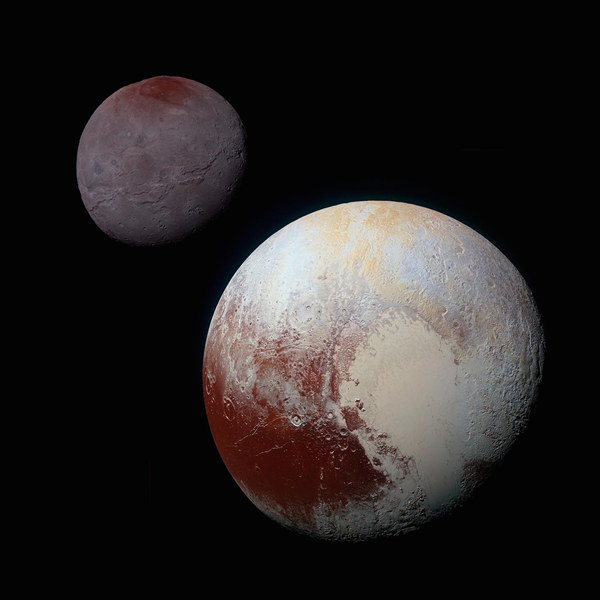In 1991, Alan Stern, Jonathan Lunine, and David Morrison presented a proposal to NASA to venture forth into unexplored territory. If they’d had their way, NASA would have sent probes to Neptune and Pluto.
Their concept called for the crafts to be virtual twins (or triplets, really) of the Cassini probe, NASA’s venerable Saturn vessel that’s coming to an end this fall after a remarkable 13-year run.
Here’s how the missions might have gone down, according to the proposal, titled “Neptune/Pluto Flight Project.” In the proposal the probes are sometimes referred to as the Neptune Mariner and Pluto Mariner.
The twin missions would have launched between 2001 and 2003. The equivalent of the Huygens lander was to dive into Neptune’s cloud layers, while the Neptune mission would enter a retrograde orbit with the intent to maneuver close enough to Triton to sample its upper atmosphere. It would have been a four-year mission, though NASA has a habit of extending missions for as long as the craft still has fuel and is functional.
The Pluto mission was designed as a flyby with two probes. A smaller imaging probe would precede the main craft to analyze the atmosphere of Pluto and perform reconnaissance before the main show.
The Pluto Plan
Both crafts would complete a flyby of Venus first, looking for signs of volcanism. The next step was a flyby encounter with Earth before sailing through the asteroid belt and attempting encounters of two to four asteroids out of few dozen thought to be along their path. Both crafts would later have taken measurements of Jupiter’s magnetotail, and at least one of them could have flown through the jovian moons for a close encounter during a gravity assist; either Ganymede or Callisto would have been the likely targets. The Pluto probe would begin its Jupiter encounter around 2006, with the Neptune probe following within a year or two.
The Pluto encounter would have taken place around 2015, while the Neptune probe, going a hair slower as an orbiter instead of a fly-by mission, would begin its encounter in 2020. However, the Neptune probe, along with its encounters of Jupiter’s moons and a proposed Venus flyby, would have come close enough to Chiron to study it and gather a limited amount of science.
Chiron (not Charon) is a large, rocky body between the orbits of Jupiter, Saturn, and Uranus that may be a dwarf planet. It’s the largest in a class of objects known as Centaurs, which are asteroids and other small rocky bodies between the asteroid belt and the Kuiper Belt.
At 100 days before encounter in 2015, the Pluto imaging probe would be released, performing what the authors called “complete, global, high-resolution imaging coverage” of Pluto and Charon (not Chiron). By sending the probe ahead, the team would be able to use imaging from the Pluto flyby and the probe to build a complete view of Pluto and Charon. The New Horizons craft got only a partial view.
The Pluto Mariner would then fly through the Kuiper Belt, which in 1991 was only theorized. The first Kuiper Belt Object wasn’t discovered until 1992, though the region had long been believed to exist. The Kuiper Belt (called the Kuiper Disk in the paper) was at that time believed to be a region of mostly comets.
Neptune Mariner
The Neptune probe’s encounter would begin by sending a Hugyens-like lander into the atmosphere of Neptune, then entering orbit after a long period of imaging and reconnaissance. The craft would have repeatedly used Triton to propel itself through the rest of the region, bringing a 200-day orbit down to 80. Comparisons could then be made between Pluto and Triton once both bodies were better understood.
At the time, the authors remarked that Pluto might have Triton-like hazes and cryovolcanism. From New Horizons flyby evidence, that seems to be the case.
From there, the extended mission proposals called for the Pluto Mariner to study the Kuiper Belt and compare it to dust disks in Vega and Beta Pictoris as we then understood them. The probes would, like the Voyagers before them, also study the heliosphere region.
Neptune extended mission ideas involved taking it close enough to the blue planet to measure its magnetic fields.
Never to see the light of day
Of course, these missions never went beyond the paper they were written on. In the end, this was just one of several drafts of a Pluto mission Stern and collaborators would submit before the New Horizons mission was approved. But to date, we haven’t returned to Neptune at all, and have instead relied almost exclusively on Hubble data to understand the ice giant.
Additionally, as both missions would have been at the fringe of the planetary part of the solar system, both would have required radiothermal gradients (RTGs), which are now in short supply at NASA. These power and heat supplies require Plutonium-238, an isotope which can’t be naturally produced.
But just imagine: The Neptune probe, had it launched, would have been able to study no fewer than four planets, encountered two of the largest moons in the solar system, studied a handful of asteroids, and flown by a dwarf planet all before entering orbit around a complex, dynamic world at the boundary between gas giant and super-Earth. It would have spent at least four years studying Neptune’s 14 moons (and probably discovering a few more), including at least one captured Kuiper Belt object larger than Pluto. We would, had the timeline panned out, be finding out more about Chiron and its odd system right now and crossing our fingers for the Neptune encounter, softening the pending blow of the death of Cassini (assuming its extended mission was similar in this alternate universe.)
For now, that’s what we’ll have to do: just imagine.













